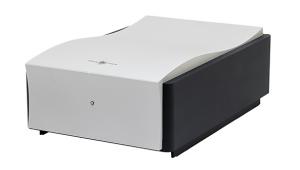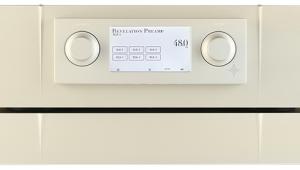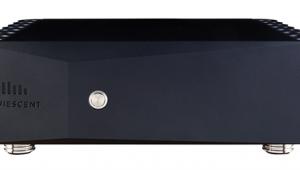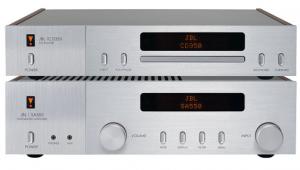Conrad Johnson Classic (£1600/£2300 With Phono)
There cannot be many words more overworked than ‘classic’. Sometimes it means a previous model, kept in production ‘by popular demand’, perhaps because the new replacement model doesn’t quite cut it. Sometimes it means a new emulation of an old and once successful product, which may bear little real resemblance to a famous forebear.
Conrad-johnson’s website straightforwardly lists all its discontinued models as ‘Classic Products’. Things might get a bit confusing in the future, when that legacy section eventually has to include the new budget preamp which conrad-johnson introduced recently, because this is already called the Classic.
In fact, the story of this new model goes back around two decades. Once upon a time, there was a conrad-johnson preamp called the PV7, a low-cost model in a midi-sized box. In the late 1980s, this was replaced by the PV10, the lowest-cost model to benefit from conrad-johnson’s implementation of a proprietary ‘zero global feedback’.
Originally, the PV10 was a line-and-phono preamp, but by the early 1990s many CD-based users no longer wanted a phono stage. So the preamp was made available in two versions, the line-only PV10AL and the line-plus-phono PV10BL, at extra cost of course. Other c-j preamplifiers had provision for a dealer-retrofittable phono stage, but to keep the manufacturing costs down, this option was omitted from the PV10. The phono parts had to be soldered in at the factory, so the product had to be ordered with or without phono stage at the outset.
PLUGGING THE GAP
The PV10 and its variants ran for more than 10 years, but by 2002 it was no longer commercially viable and was discontinued, leaving the PV15 as the base model. Dealers and distributors regularly asked for a cheaper preamp, but their pleas went unanswered for a few years. In 2007, though, c-j decided to upgrade the PV15 to create the ET2. Then it became possible to fill the gap with a new budget model, the Classic preamplifier featured here. In pricing terms it represents the return of the PV10, but in a full-width case and based on the PV15 circuit, with some improvements.
So, it is now possible to experience conrad-johnson ownership for little more than £1500. To achieve this pricing, the Classic has been kept as simple as possible but, as the saying goes, no simpler. Inside, the five tubes, a few tall heatsinks and eight of c-j’s big proprietary capacitors dominate the spacious green landscape of a chassis-sized circuit board.
If you have the phono version, you will also see two tiny sets of four dip switches close to the Aux 1/Phono input sockets. These change the input impedance from the standard moving-magnet 47kohm setting to other values, down to 200ohm. There is no gain adjustment but medium and high-output moving-coil cartridges will be suitable.
On the front are a volume control, a source selector for the phono input and four line inputs (or five line inputs, if you have the line-only version) and an on/off switch. And that’s it. No tape loop, no flashing lights and no remote control.
A WINDOW ON THE MUSIC
Although the Classic will often be partnered by a c-j tube power amp, it should work just as well with solid-state amplifiers. So I tried it first with the neat and capable Karan KAS180, loaned by the same importer.
With this combination, I was able to slump very happily in front of Respighi’s Church Windows played by Keith Clark and the Pacific Symphony Orchestra [Reference Recordings RR-15CD]. This gave a beautifully layered quality and a real feeling of that huge recorded acoustic with tremendous image depth.
Turning to the gorgeous solo guitar of Pierre Bensusan’s Intuité [Favored Nations 2130], the conrad-johnson showed, I think, a true ability to resolve and present ambient detail. On some systems, the deliberately reverberant sound of this recording makes you feel you are listening to a very big, echoey and rather artificial guitar or oud, which becomes just too room-filling. Here, though, you could feel that the music was coming from fingers and strings, without the sensation of clangy reverberation closing in on you. The music still had poise and clarity, though the ambient sound effects gave a kind of cushioned quality, which I think is what the producer intended.
Listening to many more tracks confirmed what I think is the hallmark c-j sound. It was unobtrusively natural, never seeming to throw detail at you, but presenting the textures of musical sounds in a very satisfying way. It’s the effect that will keep you listening through most of a CD when you’d only intended to sample one track.
ALL VALVES TOGETHER
Much as I liked the Classic/Karan, it was time to try an all-valve combination. I was fortunate to have the sleek-looking Unison Research P30K power amp on loan, so I hooked this up. I couldn’t resist putting on the LSO’s Enigma Variations and here, for example, the superb sound of the woodwinds in the elfin flourishes of Variation 4 would win any listener over I believe. The combination showed a lovely revelation of timbral subtleties and at the same time demonstrated convincing dynamics and speed. The all valve-sound was certainly very enticing here.
If you are contemplating this preamp, take a favourite disc that you regard as real ear candy, one that always astonishes you with its naturalness, subtlety and freshness. Listen to this on the Classic and it should astonish you even more.
Sometimes, ‘classic’ can just mean ‘old’, in the way that ‘high-end’ can just mean ‘expensive’, but fortunately neither applies to this Classic. However, if you really can’t bear to spend this little on a preamplifier, note that conrad-johnson has just announced a new ‘turbo’ version, using higher-grade parts in key areas. There can’t many acronyms more overworked than ‘SE’. But if the standard model is anything to go by, the Classic SE could be a very special preamp indeed.
VERDICT
This may be entry-level c-j, but it conveys what the brand is about. It doesn’t impose a ‘character’, nor does it ever sound brightly-lit or superdetailed. Yet it allows the music to come through in a truly beguiling way. If you can live with the lack of remote control and the need for periodic valve replacement, it can be warmly recommended.
Originally published in the February 2009 issue



















































